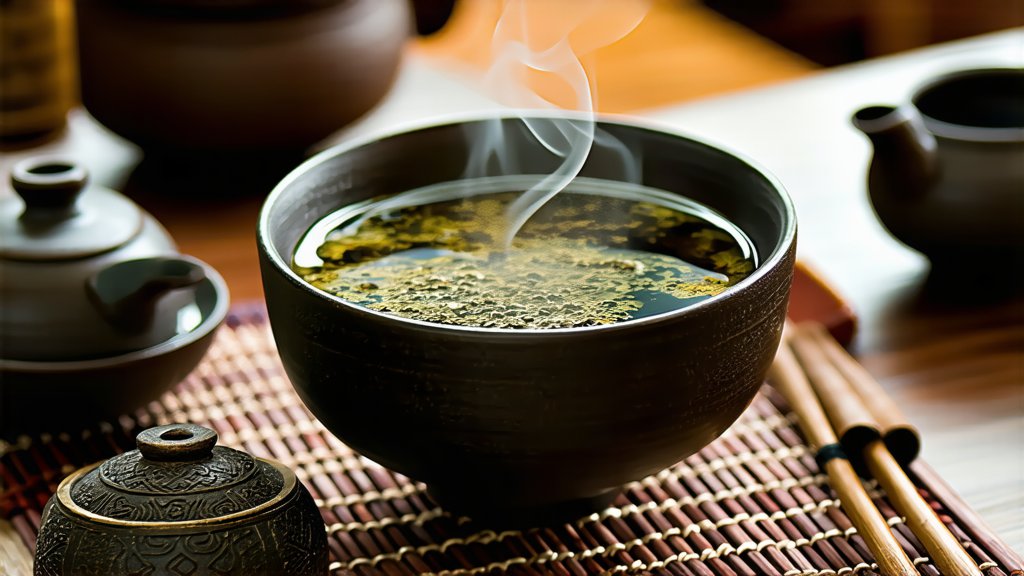
Pu-erh tea, a revered variety within the vast spectrum of Chinese dark teas, stands as a testament to centuries of cultural heritage and meticulous craftsmanship. Originating from the Yunnan Province, this unique tea is celebrated for its complex flavors, aging potential, and numerous health benefits. In this exploration, we delve into the rich history, diverse varieties, intricate production process, and art of tasting Pu-erh tea, offering an in-depth understanding that transcends borders and time.
A Historical Odyssey
The roots of Pu-erh tea trace back over 1,700 years to the ancient caravan routes known as the Tea Horse Road. It was along these trade paths that Pu-erh began its journey from the lush mountains of Yunnan to Tibet and beyond, becoming a staple in the diets and cultures of various ethnic groups. The name "Pu-erh" itself is derived from the town of Pu'er in Yunnan, which served as a crucial hub for tea trading during the Qing Dynasty. Over time, Pu-erh evolved not just as a beverage but as a cultural symbol, embodying the philosophy of harmony between man and nature.
Varieties and Classifications
Pu-erh tea is broadly categorized into two types: raw (Sheng) and ripe (Shou). Each type undergoes distinct processing methods, leading to different aging characteristics and flavor profiles.
-
Raw Pu-erh (Sheng): Made from sun-dried Camellia sinensis leaves, Sheng Pu-erh undergoes minimal processing, allowing it to age naturally over time. As it matures, its flavor transitions from astringent and vegetal to smoother, more complex notes, often reminiscent of fruits, flowers, and earth.
-
Ripe Pu-erh (Shou): This variety undergoes a post-fermentation process called 'wet piling,' where piles of tea leaves are dampened and left to ferment under controlled conditions. This accelerates the aging process, resulting in a tea that is mellow, rich, and earthy right from the start, with hints of dried fruit and spice.
The Art of Craftsmanship
The production of Pu-erh tea is a labor-intensive process that respects tradition while embracing innovation. Here’s a glimpse into its making:
-
Plucking: Only the top one or two leaves and a bud are handpicked during specific seasons to ensure optimal quality.
-
Fixation: Freshly picked leaves undergo a brief heating process to halt oxidation, preserving their green color and fresh aroma.
-
Rolling: Leaves are rolled into tight spirals, facilitating even fermentation and enhancing extraction during brewing.
-
Drying: Rolled leaves are sun-dried or baked to reduce moisture content.
-
Aging: For Sheng Pu-erh, aging occurs naturally over years or even decades, transforming its character. Shou Pu-erh, on the other hand, undergoes the wet piling process, where microbial activity breaks down tannins, mellowing the taste and deepening the color.
The Ritual of Tasting
Tasting Pu-erh tea is an experience that engages all sensory faculties. Here’s how to appreciate it fully:
-
Preparation: Use a Yixing clay teapot or a Gaiwan for authenticity. Rinse the leaves briefly with hot water to awaken their flavors.
-
Infusion: Steep the tea at around 95°C (203°F) for the first few infusions, each lasting about 10-15 seconds. Gradually increase steeping time for subsequent infusions.
-
Observation: Notice the transformation of the tea liquor from a light golden hue (in Sheng) to a deep red-brown (in Shou). Admire the evolving aroma, which may include earthy, woody, or floral notes.
-
Savoring: Sip slowly, allowing the tea to coat your palate. Pay attention to the initial astringency (in Sheng) or immediate sweetness (in Shou), followed by the aftertaste that lingers long after swallowing.
-
Multiple Infusions: Pu-erh is renowned for its ability to be infused multiple times, each revealing new dimensions of flavor and complexity.
In conclusion, Pu-erh tea is more than just a drink; it’s a living tradition that continues to evolve with every passing year. Its depth of flavor, historical significance, and the artistry involved in its production make it a cherished treasure among tea connoisseurs worldwide. Whether you're a seasoned enthusiast or a curious newcomer, exploring the world of tea, Pu-erh offers an unparalleled journey through time and taste, inviting you to slow down, savor the moment, and connect with a legacy that spans millennia.